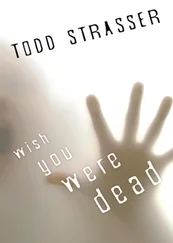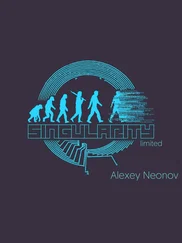Alison Strasser - Time-Limited Existential Therapy
Здесь есть возможность читать онлайн «Alison Strasser - Time-Limited Existential Therapy» — ознакомительный отрывок электронной книги совершенно бесплатно, а после прочтения отрывка купить полную версию. В некоторых случаях можно слушать аудио, скачать через торрент в формате fb2 и присутствует краткое содержание. Жанр: unrecognised, на английском языке. Описание произведения, (предисловие) а так же отзывы посетителей доступны на портале библиотеки ЛибКат.
- Название:Time-Limited Existential Therapy
- Автор:
- Жанр:
- Год:неизвестен
- ISBN:нет данных
- Рейтинг книги:3 / 5. Голосов: 1
-
Избранное:Добавить в избранное
- Отзывы:
-
Ваша оценка:
- 60
- 1
- 2
- 3
- 4
- 5
Time-Limited Existential Therapy: краткое содержание, описание и аннотация
Предлагаем к чтению аннотацию, описание, краткое содержание или предисловие (зависит от того, что написал сам автор книги «Time-Limited Existential Therapy»). Если вы не нашли необходимую информацию о книге — напишите в комментариях, мы постараемся отыскать её.
Time-Limited Existential Therapy: The Wheel of Existence,
Time-Limited Existential Therapy: The Wheel of Existence
Time-Limited Existential Therapy — читать онлайн ознакомительный отрывок
Ниже представлен текст книги, разбитый по страницам. Система сохранения места последней прочитанной страницы, позволяет с удобством читать онлайн бесплатно книгу «Time-Limited Existential Therapy», без необходимости каждый раз заново искать на чём Вы остановились. Поставьте закладку, и сможете в любой момент перейти на страницу, на которой закончили чтение.
Интервал:
Закладка:
Existential philosophers distinguish between the experience of living in time –which is what is known as ‘thought time’ (Binswanger, 1963, p. 301), that is, the way we are aware of time – and ‘lived’ time, which refers to our inner knowingness of the passing of time and which includes the idea of coming into being and disappearing from being. This view of time gives a different perspective to the concept of living in the Now where our recollections and view of the past can only be viewed from our present time. Time never stands still but is influenced by and continually moves between the past, present, and future dimensions. We are always in present time, but our present time is constructed out of our present perspective of the past and the future. We only access any past event, both its content and feeling, from our present perspective. So, there is no actual past, only our current interpretation of that past. And the same for the future, in that we are only imagining a future from our current emotional and physical perspective.
For Heidegger, time is the fundamental aspect of his thesis in that we each live our lives within temporality, with the inner knowing that our lives on this planet will end. Heidegger notes this as our ‘Being‐towards‐death’ that is future directed and is unique to humans who have this capacity to transcend the present and project towards the future that is full of possibilities. ‘Every moment of change connects us to our death anxiety’ (Spinelli, 2016, p. 135), implying that living in time is not static but embedded in change. This gives us the movement of forward living with the possibility of both hope and despair.
Time is concrete, in that we can be aware of every ticking second, grounded in the reality that the ticking is forever moving forward towards an end. Simultaneously, we can experience time as disappearing, stopping, and sometimes eternally stretched. Time is also elusive in that the past, in its detail, gets forgotten and remembered in fragments and bite‐size packages, and the future is only in our imagination, yet we often act as if it is true. ‘We measure everything in life by change and the passing of time, because we ourselves are always no longer what we were and not yet what we will be’ (van Deurzen, 2014).
Time lies within us whatever we do or whatever happens to us. As an ontological given, time is common to us all as human beings and provides an overarching and all‐encompassing mantle over our existence.
The location of time at the core of the Wheel is indicative of how time and temporality are essential to our existence and, as described in this book, a central component in our therapeutic work. Time is at the forefront of our minds as we formulate the contract with our clients and how we negotiate time both within and between sessions. It includes how we experience time in general and within the therapeutic frame.
On each occasion that we sit down with a client we are at a beginning. We have no idea what the client has experienced during the week and how they will re‐enter the relationship in that beginning moment. The same is true for how the client is experiencing their entry into the therapeutic space and their meeting the therapist.
Each time we begin a session with a client, we are also facing an end.
Maggie’s husband, after years of feeling confined by marriage and children, had decided he wanted time to find and relate to himself. Although Maggie could intellectually understand his wishes and could even contemplate her own freedom, she inwardly collapsed so that her previous routines of going to work and spending time with the children became onerous and overwhelming. Our sessions would commence with a rundown of her weekly events but soon moved to a never‐ending assortment of her thoughts. Every week, I could feel her horror when the session was over and she would have to step out of my room into the world on her own. When she was by herself, she found peace by taking a bath. The same was true when she had someone else’s total attention, someone who was absorbed in her world. In both these spaces she felt connected, so the hum of time was peaceful; it receded into the background. Conversely, in the face of endings, in having to negotiate with others or in having to think about the future, her anxiety welled up, causing her to imagine an uneasy future which would be continually disrupted; the hum of time became foregrounded and disturbing.
Self: The Secure–Insecure Continuum
In the core of the existential Wheel, residing alongside time is the self. The phenomenological understanding of time as a shifting space applies equally to our notion of self. As is the case with time, the self is not a constant to be located but is elusive, as it shifts from moment to moment in response to each situation as it arises. As is the case with time, the self interacts with all the sections of the Wheel.
In this version of the Wheel of Existence, time is placed at the core to denote its centrality of meaning and intent. Circling the inner core of time is the secure and insecure self that, in existential terms, signifies a self that is not fixed or entity‐like but instead is seen as self‐in‐process that continually reinterprets and reshapes its identity from the multiplicity of derived experiences.
There is no concept of a self on its own; the self is totally relational and exists only in intimate connection with other people, concepts, ideas and the world around us. Not only do we come into relationship with others, but they also come into relationship with us. They are witnessed by us and we are witnessed by them, and so for Heidegger, ‘we can never encounter only [ourselves]’ (1962, p. 274). ‘We cannot … understand – or make sense of human beings – our selves included – on their own or in isolation, but always and only in and through their inter‐relational context’.
This idea of a ‘relational self’ is highlighted when we think about how the responses of others affect our sense of who we are, our self‐esteem. Other people’s opinions – or more realistically, our perception of other people’s opinions – are at the forefront of how we view ourselves. Since we are so connected with others our sense of self is intimately tied to the other, often creating a kind of roller coaster reaction in terms of our self‐esteem. We can move from momentary feelings of exhilaration to dismay within a flash should someone inadvertently or purposely say something negative about us.
In this relational understanding of the self, our self‐concept is also intricately entwined with our value system. We continually assess how well we are conforming to our acquired and desired values that then translate into our self‐esteem. For example, if we value being accepted and liked, we will need to please others to feel acceptable to ourselves. When our strategy works and we receive approval, we feel flattered and good about ourselves. The opposite is also true: when we desire approval, and our attempts to gain it by striving to please others don’t work and instead we feel someone’s dislike or disapproval, our self‐esteem may take a battering.
Furthermore, we can also say that our self‐concept is linked not only to values but also to our perception of safety, our notions of time and temporality as well as with all the other sections represented on the existential Wheel.
The idea of the ‘relational self’ embraces the phenomenological principle that we are continually defining, constructing and reinterpreting who we are as we meet life in our moment‐to‐moment interactions. We move continually from feeling secure, good, okay or hopeful to being thrown into disarray and feeling insecure, bad, not okay and pessimistic. In the core of the Wheel, the arrows denote a continual flow representing this ever‐shifting sense of self from secure to insecure.
Читать дальшеИнтервал:
Закладка:
Похожие книги на «Time-Limited Existential Therapy»
Представляем Вашему вниманию похожие книги на «Time-Limited Existential Therapy» списком для выбора. Мы отобрали схожую по названию и смыслу литературу в надежде предоставить читателям больше вариантов отыскать новые, интересные, ещё непрочитанные произведения.
Обсуждение, отзывы о книге «Time-Limited Existential Therapy» и просто собственные мнения читателей. Оставьте ваши комментарии, напишите, что Вы думаете о произведении, его смысле или главных героях. Укажите что конкретно понравилось, а что нет, и почему Вы так считаете.












